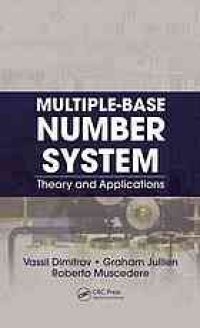"This book introduces the technique of computing with a recently introduced number representation and its arithmetic operations, referred to as the Multiple Base Number System (MBNS). The text introduces the technique and reviews the latest research in the field. The authors take the reader through an initial introduction to number representations and arithmetic in order to lay the groundwork for introducing the
MBNS. They also deal with implementation issues of MBNS arithmetic processors targeted to selected applications in DSP and cryptography"--"FORWARD This is a book about a new number representation that has interesting properties for special applications. It is appropriately catalogued in the area of Computer Arithmetic, which, as the name suggests, is about arithmetic that is appropriate for implementing on calculating machines. These 'machines' have changed over the millennia that humans have been building aids to performing arithmetic calculations. At the present time, arithmetic processors are buried in the architectural structures of computer processors, built mostly out of silicon, with a minimum lateral component spacing of the order of a few tens of nanometers, and vertical spacing down to just a few atoms. Arithmetic is one of the fields that even young children know and learn about. Counting with the natural numbers ( ) leads to learning to add and multiply. Negative numbers and the concept of zero lead to expanding the natural numbers to the integers ( ), and learning about division leads to fractions and the rational numbers. When we perform arithmetic "long hand" we use a positional number representation with a radix of 10; undoubtedly developed from the fact that humans have a total of 10 digits on their two hands. Early mechanical, as well as some electronic digital computers, maintained the radix of 10, but the 2-state nature of digital logic gates and storage technology leads to a radix of 2 as being more natural for electronic machines. Binary number representations, which use a fixed radix of 2, are ubiquitous in the field of computer arithmetic, and there are many valuable text books that cover the special arithmetic hardware circuits and processing blocks that make use of binary representations"--
Read more... 